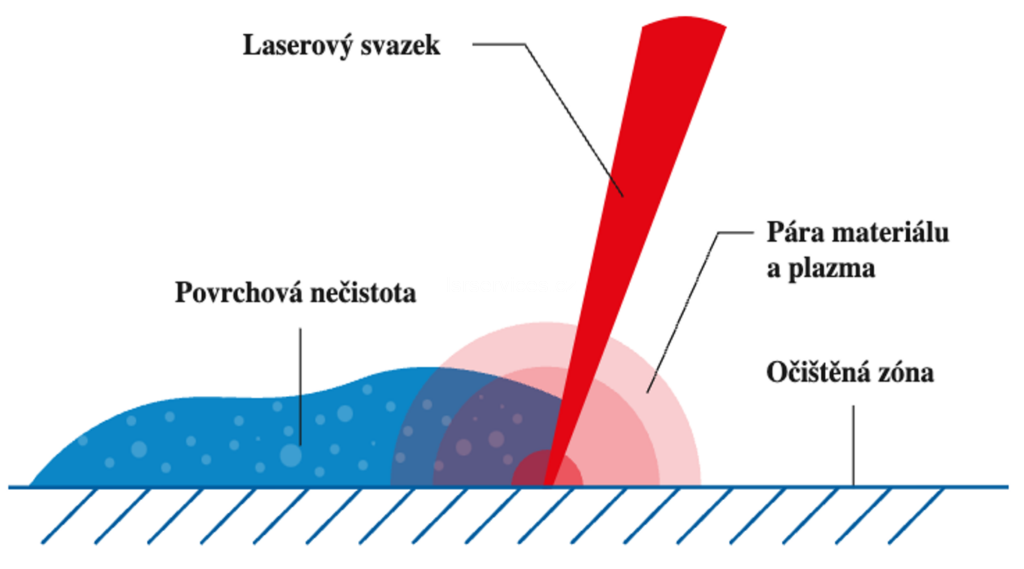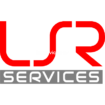The principle of laser cleaning
Laser cleaning is based on so-called laser ablation. This involves the interaction of the material to be cleaned with very strong light radiation. When the radiation hits the contaminants, it is absorbed and subsequently breaks the covalent chemical bonds in the molecules and causes them to disintegrate. In this way, rust, old paint, mineral oil and other grease, soot, metal complexes, etc. can be removed very effectively. The substrate material itself does not absorb the beam, but reflects it. Therefore, no energy is transferred and no disturbance of the surface occurs.
The interaction of the laser beam with the soiled material is accompanied by a number of physical processes, mainly sublimation, melting, evaporation, shock waves, acoustic effects, etc. These phenomena can be used very effectively in practice to remove various contaminants from different materials and according to different requirements. By appropriately adjusting the individual parameters of the pulsed laser, such as pulse energy, pulse length, frequency, light beam trajectory, etc., it is possible to choose, for example, between very intensive coarse removal of dirt or, on the contrary, gentle cleaning, where, for example, it is desirable to preserve a certain patina on historical objects.

Advantages of laser cleaning
- It is a non-abrasive, non-contact cleaning process – the substrate material is not disturbed if the laser parameters are set appropriately. Even with repeated cleaning, there is no change in the shape of the moulds or disturbance of the fine surface contours of historical objects.
- During laser cleaning, impurities are transferred to the gas phase. There is virtually no pollution of the surroundings, no secondary waste is generated and it can be operated indoors, in normal traffic or in public.
- With the appropriate laser parameter settings, there is no thermal or mechanical stress on the substrate material and thus no changes in its shape and fine surface structure.
- The laser can be used to clean surfaces of various metals, stone, concrete or wood.
- Laser cleaning easily cleans rugged surfaces such as ribbing, filter grids, tension metal, materials with different structures and compositions.
- Modern pulsed lasers are highly efficient, a large part of the energy is used for the actual degradation of the dirt, making cleaning energy-efficient. Since no secondary waste is generated, laser cleaning is environmentally friendly.
